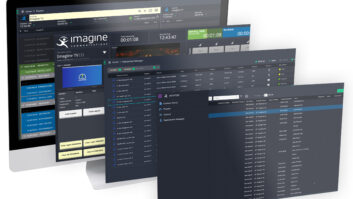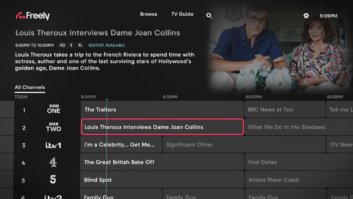Sometimes it’s hard to notice that something has changed when it’s right in front of you. The way we watch TV is a good example. We’ve gone from a sit-back, top-down way of interacting with our TVs to leaning forward and choosing what we want to watch, and when, via streaming.
While this change has been going on for a while, it has really taken off during lockdown. Research from the UK’s communications regulator Ofcom found that an estimated 12 million UK adults signed up to new streaming services during lockdown. Three million of those had never used a streaming service before. The same report found that people spent twice as much time watching subscription streaming services such as Netflix, Amazon Prime Video and Disney Plus, and this trend was even more pronounced among 16-34 year olds.
Take Disney Plus as an example. The over-the-top (OTT) service launched in the UK just as the country went into lockdown in March 2020 after initially launching in the US in November 2019. At the end of 2020, The Walt Disney Company announced that it now has 86.8 million subscribers to Disney+ worldwide. We’re proud to count Disney as one of our customers and to feature Disney Plus in our latest Curiosity Kid adverts.
It’s a similar story for other streaming services too. According to the Ofcom research, BBC iPlayer attracted 570 million programme requests in May 2020, 72 per cent higher than in May 2019. Meanwhile Channel 4’s on-demand service, All 4, generated 30 per cent more views among 16-34s in the first two weeks of lockdown; and viewers spent 82 per cent more time on ITV Hub.
Streaming needs the cloud and data
While this has been great news for streaming services it has also presented two significant challenges. Firstly, the need for an infrastructure that is agile enough to scale instantly to cope with the enormous fluctuations in demand. And secondly, the need to improve the experience for viewers and find easier ways for them to discover content they will love.
At AWS we’re helping streaming services solve both challenges. A demand-based content processing and delivery platform needs to be underpinned by an agile, cloud-based infrastructure. But additionally, the answer to both challenges—running a dynamic video infrastructure and improving recommendations and personalisation for viewers—is effective use of data.
Without proper video delivery analysis, you can’t improve either your performance or your viewer experience. And without equally effective analysis of what viewers are watching and enjoying, you can’t make the recommendations they need to get the most out of your service, or even know what productions to invest more in. Let’s not underestimate what has changed for media companies. With traditional linear television, getting hold of accurate data was a challenge, never mind using it to make real-time decisions.
AWS helps companies turn data into understanding and action. For streaming services that means better network performance and coping with ever larger peaks and troughs in demand. And it means providing an enhanced viewer experience that goes beyond just more personalised recommendations—for example, by fine-tuning recommendations according to a viewer’s current activity or by providing personalised, real-time stats for a live-streamed event.
Back of the net
Sport is a great example. AWS works with sports streamer DAZN, which delivers millions of hours of action to its subscribers, everything from the Bundesliga to Formula 1.
DAZN has data at its heart. The primary purpose of that data is to ensure DAZN’s video streaming runs smoothly—no small task. It needs to estimate the level of interest just before a big game to proactively manage the thousands of new sign-ups that happen just before kick-off. AWS provides the agility for it to scale to meet that demand, pay only for that demand, and then scale back down 90 minutes later.
DAZN also uses AWS services to ensure that those fans who sign up to watch one game are offered something else to keep them coming back based on their viewing data. The streamer also uses in-game statistics and analysis to enrich the viewing experience by providing deeper insight and context for fans in real-time.
We have the tools to deal with all your data and turn it quickly into insight for your business, and to improve the experience for your customers and viewers. For example, Formula 1 uses Amazon SageMaker to build machine learning models that help fans better understand the split-second decisions made by a driver or pit crew that can dramatically affect the outcome. In addition, we have media-specific services to address the entire content chain – from creation to consumption.
TV’s shift from broadcasting to streaming has dramatically changed the landscape for media businesses. Organisations of all kinds are seeing similar challenges, with their markets and business models evolving faster than ever. The only certainty today, it seems, is uncertainty. Navigating that uncertainty requires the ability to turn data into decisions, and the agility to quickly turn decisions into action. And those are things that AWS can help with on your organisation’s journey into this future world.







